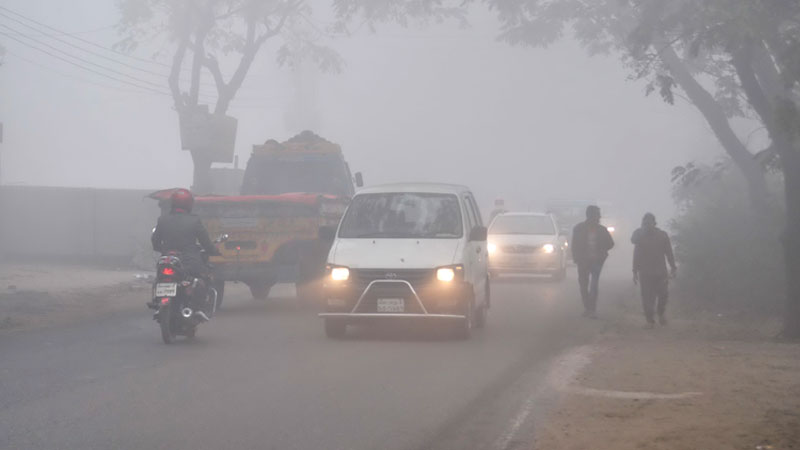Fog forces frequent flight disruptions

A thick blanket of fog is forcing the authorities of Hazrat Shahjalal International Airport (HSIA) to suspend flights for six to seven hours daily for the past one month in the absence of state-of-the-art Instrument Landing System (ILS). The fog is leading to the delay and diversion of around 250 domestic and international flights, sources in the airport said, adding that even yesterday, the authorities were forced to shut down flight operations for at least two hours.
At least three international flights were delayed or diverted to Kolkata because of the suspension of flight operations, said Wahidur Rahman, deputy director of the air traffic control office of HSIA. At least a dozen domestic flights were delayed as the flight operations resumed at about 9:30 am in the morning, he added.
Despite a plethora of technology being available to today’s pilots and ground crew, air traffic controllers like Wahidur Rahman rely heavily on being able to see the aircraft they are communicating with. He said the visual control room, an integral part of every air traffic control tower, allows controllers to guide planes through the airport more easily.
“However, heavy fog and misty conditions can hamper our efforts to physically see the aircraft, with the rest of the airport sometimes becoming completely invisible from the control tower,” he added. In the past, such situations had resulted in incidents such as the Tenerife airport disaster in 1977, the world’s worst aviation disaster.
Wahidur Rahman told The Independent that in foggy weather, air traffic controllers switch to radar and implement “low visibility procedures” in order to carry on operations safely. He said the procedures affect the aircraft on approach and departure, as well as all movement on the apron (apron is the flight line or the ramp area of an airport where aircraft are parked, unloaded or loaded, refuelled, or boarded).
Additionally, all aircraft use the Instrument Landing System (ILS) at the airport in order to be guided automatically to the runway, he noted. The problem with HSIA is that the airport has Category-1 ILS, which means without proper visibility the air traffic control tower cannot give permission for landing.
For ILS-1, aviation experts said, an aircraft requires 2,000–2,800 metres of visibility to land, which is quite difficult during foggy weather. If the airports are upgraded to the ILS-2, visibility can be 600–1,200 metres, which is quite comfortable for pilots.
Source: www.theindependentbd.com
